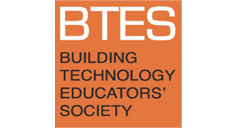Truss-ting History
- Chad Dennis (Northeastern University)
- Joshua Friedman (Northeastern University)
Abstract
Building performance in this case being evaluated by traditional means, such as energy use over time, in addition to qualitative questions of space, history, pedagogy etc. Another term explicit in this project is that of “future use” by which we build on typical modes of site analysis in addition to the growing body of research developed through building scientists, we ask how building systems can be used to accommodate a variety of program while simultaneously maintaining a strong connection to place. Through the use of a hybrid system of glulam trusses and CLT panels to repurpose an existing historic pumphouse on the UMass Boston campus, an annex is created in dialogue with said structure.
The use of long span trusses serves the long-term needs of the project, ensuring the building’s resiliency into the future. In the short term, the raising of trusses from the ground plane enables a landscape program to be developed that deals with rainwater management and flooding. Sculpting of topography channels water beneath the structure, collecting it within a depression and eventually filtering it prior to discharge into nearby Boston Harbor.[1] In the long term, spaces have inherent programmatic flexibility; long spaces enabled by the trusses enable a large variety of programs to occupy the spaces. CLT floor panels might also be removed, the trusses serving as the main structural support members, allowing for sectional flexibility.
A final aspect of the project’s adaptability is its programmatic functions. As designed in the current day, the structure is enmeshed in UMass Boston as a piece of critical infrastructure, serving much needed campus functions such as power generation, lab spaces, and rainwater management. The pump house in its current stage exists as a biomass power plant, serving increased power consumption needs stipulated in local master plans. The spans enabled by the structure, however, enable various types of machinery to be switched in and out, allowing conversions from one power source to another. The annex, as designed, serves laboratory functions. The overdesign, in terms of HVAC and a flexible raised floor system, enables expansion of this lab program or later conversion to other uses as classrooms, offices, etc.
In short, a model for adaptable design is offered, both in terms of program and in application. The system is applicable to both free standing and existing structures, as well as offering a multitude of spatial configurations as time progresses.
Keywords: Pedagogy, Material and Construction Techniques, Structure, Energy and Systems
How to Cite:
Dennis, C. & Friedman, J., (2019) “Truss-ting History”, Building Technology Educators’ Society 2019(1). doi: https://doi.org/10.7275/t787-gt43
Downloads:
Download PDF
159 Views
46 Downloads
